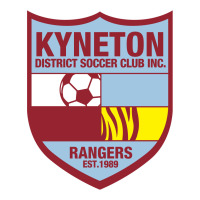Rangers Child Safety Procedure and Contacts
CHILD SAFETY CONTACTS
- Child Safety Officer: Jason Tusa (0409 095 596)
- President: Ron Cole (0411 289 717)
- Junior Co-Ordinator: Jennifer Stanwix (0419 328 331)
CSO Email: jastusa70@gmail.com
Club Email: kynetonsoccer@bigpond.com
PROCEDURE FOR REPORTING
Flowchart
|
Step 1 REPORTING: Any person (aged 18 or over) that forms a belief, on reasonable grounds, that a sexual offence has been committed in Victoria against a child (under the age of 16 years) by another person (aged 18 or older), must make a report to the police as soon as practicable, unless the exception above applies. Committee members, employee, volunteers, or of-age players of the Club should discuss these observations and concerns with the Club Child Safety Officer, who can assist the person to make the report to the police as required. FFV can also assist. Any person (of any age) that forms a belief on reasonable grounds that a child is in need of protection from child abuse (physical, sexual, emotional, psychological or neglect), may disclose that information to the police or the Department of Health and Human Services (“DHHS”). Victorian Department of Health and Human Services (DHHS)North-eastern rural and regional 1800 650 227. After hours or immediate safety concerns: Child Protection Crisis Line (24 hours) 13 12 78. Victoria Police - Sexual Offences and Child Abuse Investigation Team (SOCIT) - Eastern Victoria (03) 5820 5878 The Club encourages all persons with concerns to raise this directly with the Club Child Safety Officer. |
|
Step 2: It may be that, following the previous step, a person decides to make a report to DHHS or the police with the support of the Club Child Safety Officer. Where a report is made, the individual must also advise the Club. Making a report: Ring: · Victoria police on 000 for emergencies. · If it is not an emergency, ring the Victoria Sexual Offences and Child Abuse Investigation Team on (03) 8690 4056. · DHHS on 1300 664 977 or 131278(AH). Ask for Child Protection. Information for making a report: · name, age and address of child; · the reason for suspecting that the behaviour or injury is a result of abuse; · an assessment of the immediate danger to the child; · a description of the injury or behaviour observed; · the current whereabouts of the child; · any other information about the family; and · any specific cultural details, e.g. English speaking, disability, etc. Ask that the Club be informed of each step of the procedure. Request that if an interview is to take place at the Club the visiting police officer is in plain clothes and the time of the interview is specified so that appropriate arrangements for a meeting room can be organized. If the complainant alleges that a crime has been committed by a committee member, employee, volunteer or contractor, that person will be stood aside immediately. The Club Child Safety Officer should conduct (or appoint another person to conduct) an independent investigation into the allegation to the extent that it will not interfere with investigations by DHHS or the police, and will co-operate with the authorities as required. Where an allegation has been the made, the Club will make, secure, and retain records of the allegation of child abuse and the Club’s response to it. Fulfilling the roles and responsibilities contained in this Procedure does not displace or discharge any other obligations that arise if a person reasonably believes that a child is at risk of child abuse. |
|
Step 3: If the child is agreeable to be interviewed by DHHS or the police, the Club Child Safety Officer should offer to be present at the interview to give support to the child.
|
|
Step 4: Following a report, DHHS or the police may need to contact the Club about the notification. It would be a matter of courtesy to inform the Club Child Safety Officer that a report has been made, or is about to be made. The Club Child Safety Officer should advise FFV of such matters so that we can update our records in relation to the individual. |
|
Step 5: Following a report, it is important to both protect confidentiality and the interests of the child and family at all times, as well as natural justice for the process. Special comments: · DHHS will only interview the child if he/she is agreeable; · the family will not be contacted until it is believed there is a case and the child is at risk; · if the incident which caused the report to be made has occurred in the past - the child may be seen to be no longer at risk and no further action may be taken; · the identity of the person making a notification will be kept confidential (except when that information is required in a court case) unless that person gives permission for the information to be divulged. Such confidentiality should also be requested by Club Child Safety Officer and any other person who may become aware that a notification is to be, or has been, given; · throughout the entire process of observation, discussion and reporting, the interests of the child and their family should be protected from unnecessary disclosure of information concerning abuse; and · following the making of a report to the DHHS or the police, any investigation that takes place is the responsibility of that external body.
|








